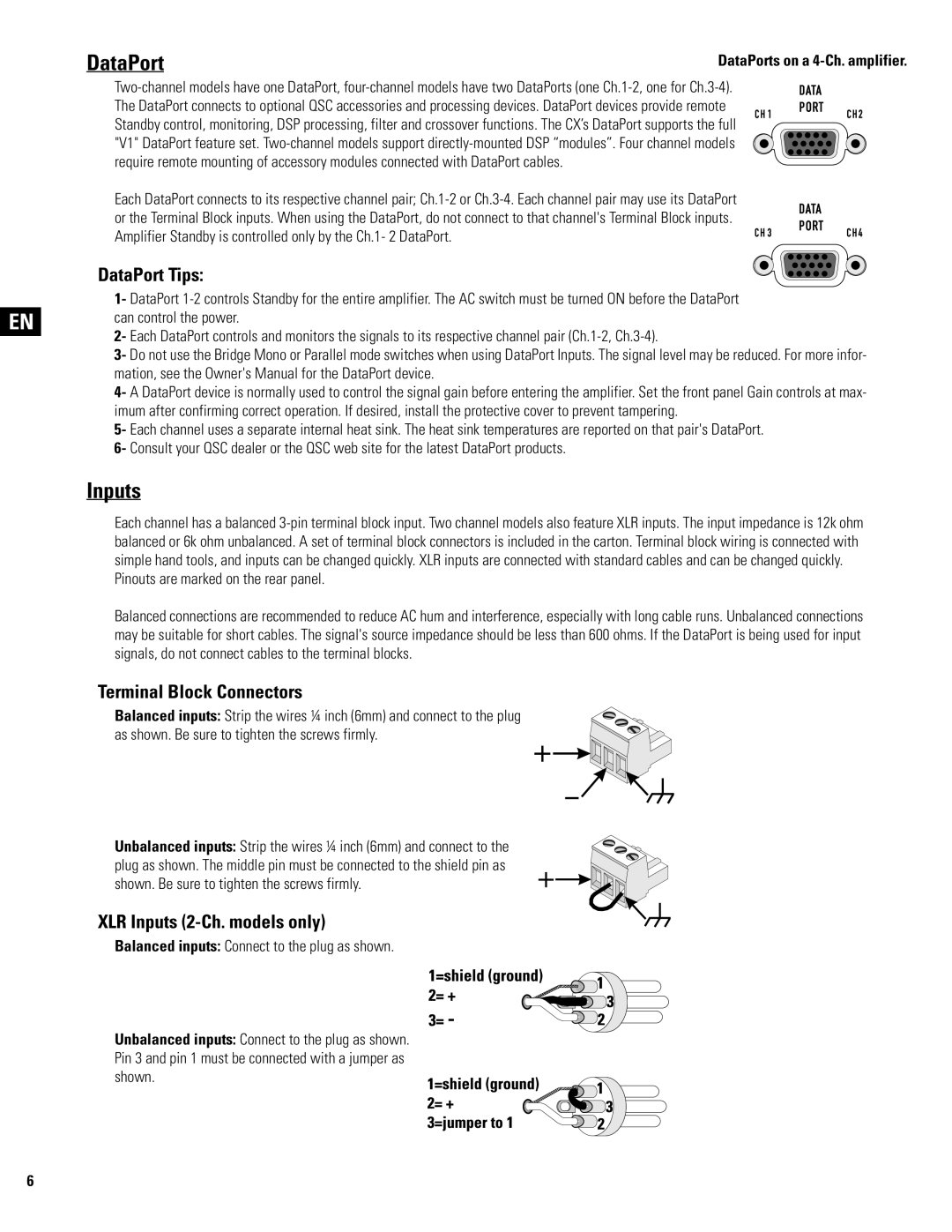CX302, CX1202V, CX502, CX702, CX1102 specifications
QSC Audio has established itself as a leader in professional audio solutions, and their CX series amplifiers, including the CX204V, CX254, and CX404, stand out for their performance and versatility. These amplifiers are specifically designed to meet the needs of commercial audio applications, such as in venues, corporate environments, and educational institutions.The CX204V is a 2-channel amplifier that delivers 200 watts per channel at 4 ohms, making it ideal for smaller venues or installations that require high-quality audio without overwhelming power. One of its key features is the inclusion of built-in DSP (Digital Signal Processing) capabilities, allowing users to optimize their sound with advanced filtering and equalization options. Additionally, the amplifier supports a range of input options, including balanced XLR and 1/4-inch connectors, providing flexibility for various audio setups.
Moving to the CX254, this 2-channel amplifier boosts power output to 250 watts per channel at 4 ohms, making it suitable for larger spaces that necessitate a bit more oomph. The CX254 also includes QSC’s Power Factor Correction technology, which ensures efficient power usage and greater amplification performance, even during demanding situations. Furthermore, it features RS-232 control capabilities, providing users with remote operation options and making integration into existing audio systems seamless.
The CX404 takes things a step further with its 4-channel configuration, delivering 200 watts per channel at 4 ohms. This amplifier is particularly well-suited for multi-zone applications where audio needs to be distributed across various areas. With its advanced overheating protection and short-circuit protection features, the CX404 is built for durability and reliability, ensuring consistent performance without the risk of damage during extended use.
All three amplifiers in the CX series include QSC's innovative Class D topology, offering lightweight and compact design without sacrificing power or audio quality. The CX series is also distinguished by its robust construction, including a rugged chassis designed to withstand the rigors of installation and performance use.
In summary, the QSC Audio CX204V, CX254, and CX404 seamlessly combine power, efficiency, and versatility, making them ideal choices for a variety of commercial audio applications. Their built-in technologies, advanced features, and solid construction emphasize QSC’s commitment to delivering exceptional sound experiences.

